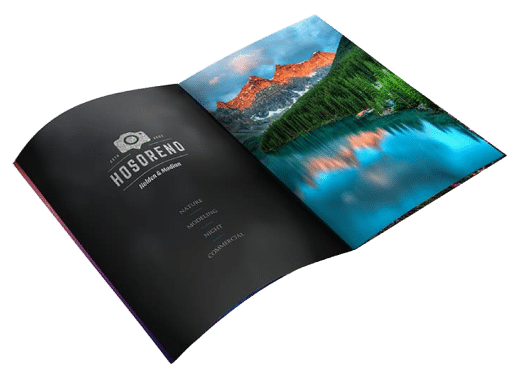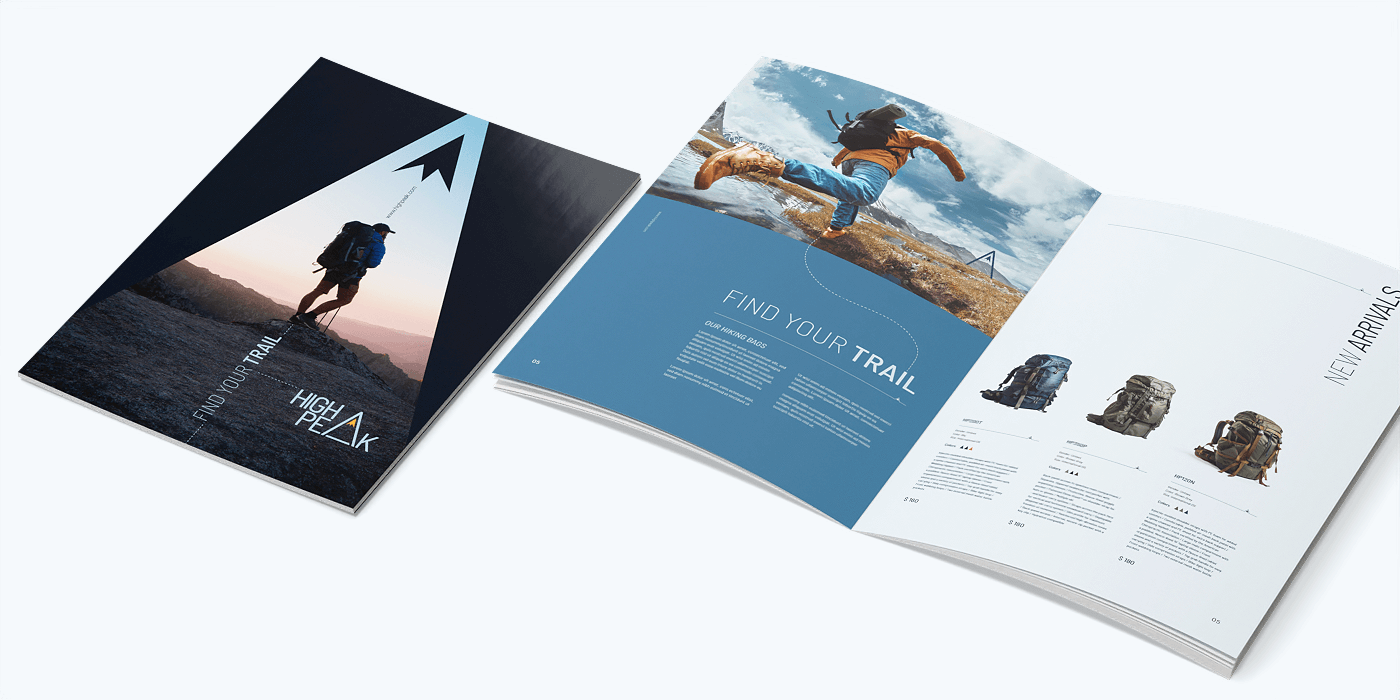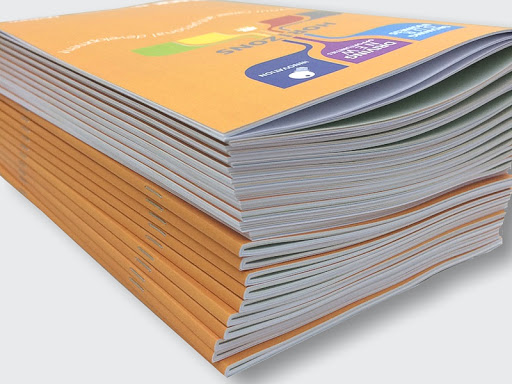Why Eco-Friendly Booklet Printing Is the Future of Sustainable Marketing
Wiki Article
The Necessary Guide to Comprehending Brochure Printing Options and Techniques
The process of brochure printing involves several considerations that can considerably influence the end product. From selecting the appropriate style and dimension to recognizing the nuances of binding approaches, each selection plays a crucial duty. Furthermore, elements such as paper stock and printing methods additional influence the effectiveness of the pamphlet. As one browses these alternatives, it comes to be imperative to realize exactly how they interconnect and what that indicates for the overall result.Comprehending Pamphlet Dimensions and layouts
When considering booklet printing, comprehending the different formats and dimensions readily available is necessary for achieving the wanted discussion. Pamphlets can be generated in many formats, including saddle-stitched, spiral-bound, and perfect-bound, each offering distinctive advantages. Typical dimensions vary from standard letter (8.5 x 11 inches) to smaller sized choices like A5 (5.8 x 8.3 inches), permitting adaptability based upon content and target audience.Selecting the appropriate size can affect both the format and viewers engagement. Larger sizes could suit visually driven content, while smaller sized layouts may be a lot more mobile and straightforward. In addition, the variety of pages affects the option of binding technique, as thicker brochures may need tougher bindings. Inevitably, comprehending these elements permits a more customized method, ensuring that the end product aligns with the desired message and aesthetic, improving the total performance of the communication.Selecting the Right Paper Stock

Binding Approaches: Factors To Consider and alternatives
When it involves binding methods for booklets, a number of options are offered, each with distinct benefits. Saddle stitch binding offers an affordable solution for thinner brochures, while ideal binding methods offer a more refined look for thicker magazines. Wire-O binding attracts attention for its longevity and ease of usage, making it ideal for files that need versatility.Saddle Stitch Binding
Saddle stitch binding uses a affordable and functional solution for constructing booklets, making it a popular option amongst authors and businesses. This binding method entails folding sheets of paper in fifty percent and stapling them along the fold line, creating a orderly and cool appearance. Normally appropriate for pamphlets with a lower web page matter, saddle stitching is optimal for magazines, pamphlets, and educational materials. The simpleness of this strategy permits fast manufacturing and is commonly preferred for short runs or advertising items. It is crucial to keep in mind that saddle stitch binding might not be appropriate for thicker booklets, as the spine might not hold up under boosted weight. Overall, it continues to be a dependable alternative for lots of printing tasks.Perfect Binding Strategies
Perfect binding is an extensively utilized technique that gives a sleek and specialist coating to pamphlets and magazines. This approach includes gluing the web pages with each other at the back utilizing a strong adhesive, allowing for a tidy edge and the capacity to hold a larger number of pages contrasted to saddle stitching. Perfect binding is particularly ideal for thicker booklets, such as catalogs and annual reports, where a sturdy, flat spinal column is wanted. In addition, it uses the alternative for a published cover that can be designed to enhance aesthetic appeal. Factors to consider such as web page count, paper weight, and the meant usage of the brochure need to be taken right into account, as they can influence toughness and general high quality.Wire-O Binding Options
Wire-O binding, understood for its durability and versatility, offers an exceptional choice for booklets that call for very easy page turning and a specialist look. This binding technique employs a collection of steel loops that hold pages safely, enabling them to lie level when open. It is particularly ideal for brochures, discussions, and guidebooks due to its durable nature. Wire-O binding is readily available in different shades and diameters, fitting different page counts and densities. Additionally, it permits the addition of covers and tabs, boosting the pamphlet's overall visual. Considerations for Wire-O binding consist of the option of cable shade, the dimension of the loops, and the extent of personalization wanted, all of which can exceptionally influence the end product's appearance and capability.Digital vs. Offset Printing: Which Is Best for You?
When choosing a printing approach for brochures, understanding the differences between electronic and counter printing is important. Digital printing utilizes modern technology to generate high-quality prints quickly and affordably, making it excellent for short runs or tasks calling for fast turn-around times. It permits customization, giving the capability to print on-demand with marginal waste.In contrast, balance out printing is a typical method that masters generating large amounts with regular high quality. It entails moving ink from a plate to a rubber blanket, then to the paper, which leads to precise details and lively colors. Counter printing typically calls for longer arrangement times and is more cost-efficient for bigger volumes.Ultimately, the option between digital and counter printing depends on project needs, spending plan, and preferred amount. For tiny, time-sensitive projects, electronic may be the most effective choice, while offset may be more effective for larger, top quality productions.
Designing Your Booklet: Tips and Ideal Practices
When developing a brochure, cautious interest to design, font style choice, and color use can greatly enhance its effectiveness. A well-structured layout overviews the viewers's eye, while ideal font styles assure readability and share the wanted tone. In addition, reliable use shade can evoke emotions and highlight key info, making the total layout much more impactful.Picking the Right Design
Exactly how can one successfully pick the ideal design for a booklet? It is vital to assess the pamphlet's function and target audience. A clean, arranged design improves readability and interaction. Using a grid system can aid in aligning elements constantly, developing an expert appearance. Additionally, including visual pecking order through differing sizes and placements of pictures and message can assist the viewers's eye and highlight crucial information. It is also vital to leave enough white room, which avoids overcrowding and allows for much better focus. Lastly, testing different formats through mock-ups can offer insight into exactly how the design executes in real-world circumstances, guaranteeing that the end product satisfies both functional and aesthetic requirements.Picking Proper Font Styles
An appropriate font can significantly boost the total style of a pamphlet, complementing the design and reinforcing the content's message. The choice of typefaces need to consider readability, specifically for body text, as it guarantees the details comes to all visitors. Sans-serif fonts are commonly preferred for digital formats, while serif typefaces can lend a typical feel in published products. It's suggested to limit font selections to two or three to maintain visual coherence. In addition, font dimension plays a crucial function; headings need to be not overwhelming however distinct, while body message should be comfortable for analysis. When picking fonts, placement with the pamphlet's theme and target market is important for efficient interaction and aesthetic appeal.Effective Use Color
Shade acts as an effective device in booklet design, assisting and forming understandings visitor feelings. It can stimulate feelings of peace, exhilaration, or trust, depending on the tones picked. Designers need to consider shade concept concepts, making sure that the picked palette straightens with the booklet's message and target audience. Making use of warm colors like red and orange can develop urgency, while cooler tones like blue and green foster tranquility.Additionally, contrast plays a vital function; corresponding shades can enhance readability and visual allure. Consistency in shade use across pages additionally reinforces brand name identity and cohesion. Ultimately, efficient color application not only captures interest yet likewise reinforces the pamphlet's function, making it a crucial facet of successful style.
Finishing Touches: Coatings and Unique Impacts
While several take into consideration the web content and design of a booklet the most vital components, the completing touches, such as coverings and unique results, play a vital role in boosting its overall charm. Coatings can provide defense and longevity, guaranteeing that the brochure holds up against deterioration. Matte finishes provide an innovative, non-reflective surface area, while glossy finishes can make colors show up more attractive get more and vibrant. Special impacts, like embossing or aluminum foil marking, include a responsive measurement that can produce an unforgettable perception. These strategies can highlight details areas, attracting attention to essential info or developing visual rate of interest. Additionally, UV coating can provide a high-shine coating that raises the overall look.Together, these finishing touches not just boost the pamphlet's visual but also connect professionalism and reliability and focus to information, eventually leaving an enduring effect on the visitor.Expense Factors To Consider for Booklet Printing
Understanding the different expense factors to consider for booklet printing is crucial for companies and organizations aiming to enhance their budget plans. Key variables affecting expenses include the option of paper, ink, and binding methods. Better products, such as exceptional paper or specialized inks, typically boost the general expense. Additionally, the dimension and page count of the brochure play a considerable function; bigger pamphlets call for even more sources and time to produce.Another important factor to consider is the printing method, whether digital or countered, as each has its own prices structure and suitability for different amounts. Companies need to also consider style prices, which can differ based upon complexity and using specialist solutions. Eventually, shipping and handling charges can include in view the overall, especially for big orders. By examining these aspects, organizations can make educated decisions that line up with their economic capacities while attaining the wanted top quality in their printed products.Often Asked Questions
What Are the Ecological Influences of Booklet Printing?
The environmental influences of brochure printing consist of deforestation from paper manufacturing, carbon emissions from transport, and waste generation from disposed of materials - Booklet Printing. Lasting methods, such as utilizing recycled paper and green inks, can reduce these effectsExactly How Can I Make Certain Color Accuracy in My Booklet?
To assure color precision in a brochure, one need to use calibrated displays, utilize professional shade accounts, perform test prints, and pick high-grade printing solutions that supply color matching and proofing alternatives for ideal results.What Is the Regular Turnaround Time for Pamphlet Printing?
The normal turn-around time for brochure printing differs relying on the complexity and amount - Booklet Printing. Normally, it varies from a couple of days to two weeks, influenced by variables such as printing techniques and ending up demandsAre There Minimum Order Quantities for Booklet Printing?

Can I Publish Brochures in Numerous Languages?
Printing brochures in multiple languages is feasible. Lots of printing services supply choices for multilingual or multilingual formats, enabling for reliable interaction. Careful planning warranties that develop components accommodate numerous languages without endangering readability or visual appeals. Furthermore, factors such as paper stock and printing techniques more influence the efficiency of the brochure. When taking into consideration pamphlet printing, recognizing the numerous styles and dimensions readily available is necessary for achieving the preferred discussion. When choosing a printing technique for pamphlets, recognizing the differences in between digital and counter printing is crucial. Additionally, the dimension and page matter of the brochure play a substantial duty; larger brochures need even more resources and time to produce.Another crucial consideration is the printing strategy, whether digital or balanced out, as each has its read this own prices framework and suitability for different amounts. The ecological effects of brochure printing include logging from paper production, carbon emissions from transport, and waste generation from discarded products.Report this wiki page